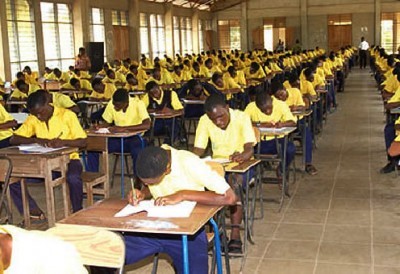WWW.SOLUTIONFANS.COM - MASTER OF ALL EXAM RUNS
Animal OBJ:
1DDCABCCBDC
11BADDCBACBD
21BCADCACAAC
31ABABCBDDAD

_______________________________________
1a)
Ration is the amount of feeds given to farm animal within 24hrs which comprises a careful combination of carbohydrate, prtein , fat and oil , vitamin and mineral
1bi)
Here the to be formed is either to be feed for increase in size, so therefore it influence the formation of feed for the animal
1bii)
Age of animals influence feed Formation such that the feed to be produced depend on the age of the animal e.g a male or young chicken cannot be given a finished mash.
1biii)
Feeds are also produced base on the purpose at which the farmer is rearing the animals example (a chicken that is to be raised for the purpose of having eggs will be given a particular type of feed meet for having of egg.
1biv)
Scarcity of ingredients in a particular area also cause inability feed that needs that ingredients
_______________________________________
3ai)
i)Rectum
ii)bladder
iii)scrotum
iv)Ampulea
3aii)
i)cervical air sac
ii)clavicular air sac
iii)sinus
iv)trachea
3b)
i) Rectum:
– it is the last stop before the faces
– it is eliminated through the anal canal
ii) Bladder:
– it functions as body urine
iii) Scrotum:
– it contains the testicles called (tester)
iv) Ampulla:
– it contains the cupula, aclustter of sensitive hairs embedded in the jelly like mound.
HEN:
i) Cervical air sec:
– the extension of lungs in birds
ii) Claviculae air sac:
– it permit a un individual flow of air
iii) Sinus:
– lighter of the sull or improve voice
iv) Tractiea:
– an integer part which air away hen
3c)
During mastication or chewing of cassava in the mouth of a pig. The salivary gland of the pig produces a digestive enzyme called ptyalin which act on the cassava thereby converting the cassava starch to maltose. The salver also helps for the lubrication of the food curd(cassava tuber).
_______________________________________
4ai)
i) Comb
ii) eyes
iii) hock joint
iv) foot
v) abdomen
4aii)
i) New castle disease
ii) Infections bronchitis
iii) Avian pox
4b)
i) Loss of Appetite
ii) Excessive Thirst
iii) Weight Loss
iv) Slobbering
v) Vomiting
4ci)
Drenching is the administering of drug to an animal by mouth mouth into the stomach, usually by force, to rid them of helminths parasites, such as roundworm, flukes and tapeworm.
4cii)
Dipping is is an efficient method of delivering pesticide or other liquid treatments to a large herd to protect sheep from infestation against external parasites such as itch mite, blow-fly, ticks and lice.
4d)
i) Respiratory system
ii) Digestive system
iii) Reproductory system
_______________________________________
5a)
Goat:
i) Four chmabered stomach
ii) Presence of false stomach
iii) Absence of gizzard
iv) Absence of crop
v) Absence of proventriculus
Chicken:
i) It doesn’t have four chambered stomach
ii) Presence of gizzard
iv) Presence of crop
v) Presence of proventriculus
5b)
i) Rumination is the process by which the ruminant animals regurgitates previously consumed feed and masticates it a second time.
ii) Coprophagy is the consumption of faeces. In some animal species it is seen as a normal behavior, like rabbits Doing that allow tough plant materials to be digested more efficiently by passing twice through the digestive tract.
5ci)
Creep feeding:
It increase weaning weights in cattle and lambs, compensation for low milk production, and a smoother transition to feedlot rations.
5cii)
Steaming Up:
It promote maximum milk production from the very beginning of the lactation.
5ciii)
Flushing:
It increase the rate of ovulation, hence, lambing rate.
5di)
i) Increased diversity of plant and animal species.
ii) Control of invasive plant species, such as yellow star thistle.
iii) Habitat restoration for threatened and endangered species.
iv) Controlling erosion from water runoff for improved water quality.
5dii)
i) Manuring
ii) Avoiding of overgrazing
iii) Irrigation
iv) Replanting
also don't forget to leave a Reply, we would very MUCH appreciate Your Comments On This Post Below. Thanks!

